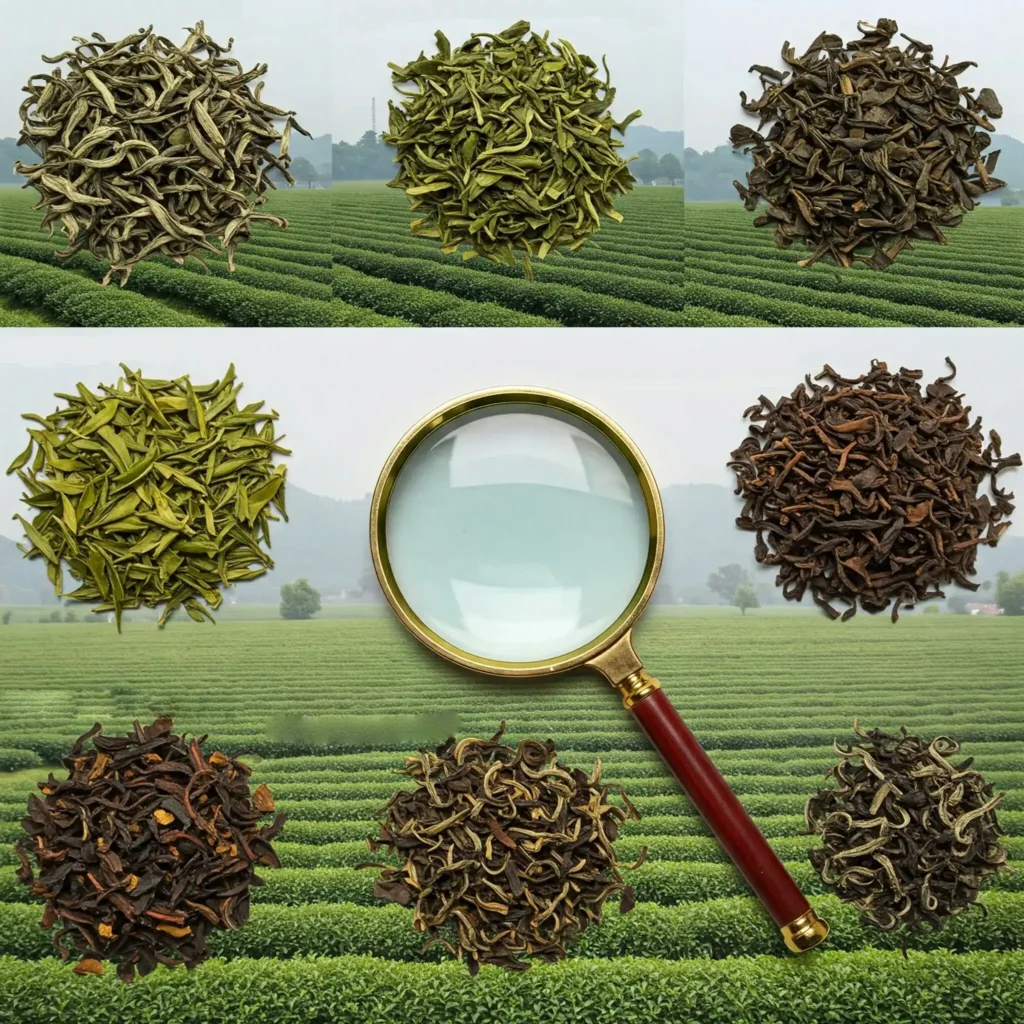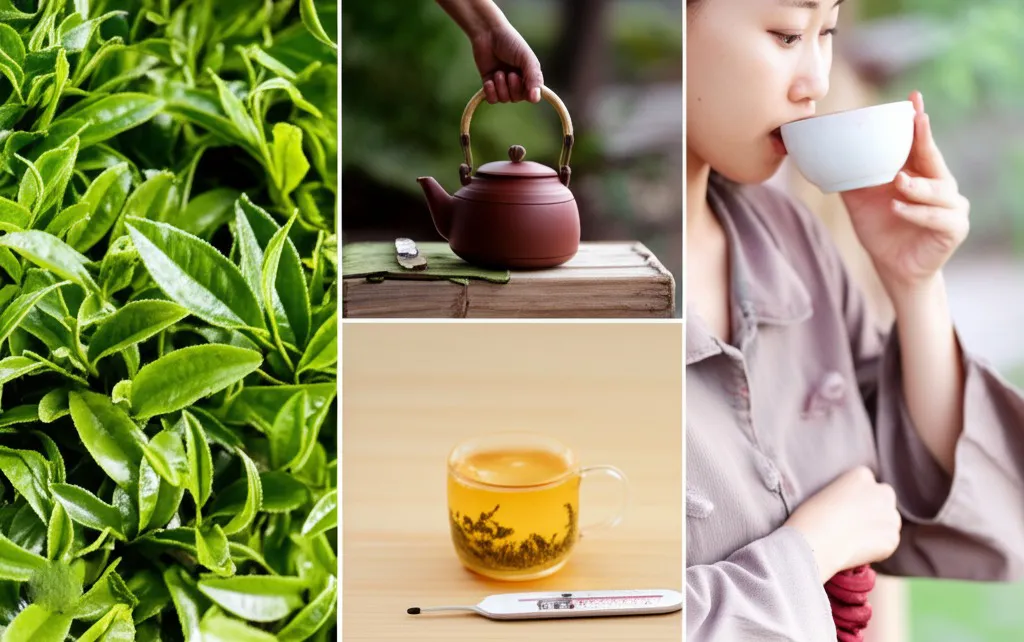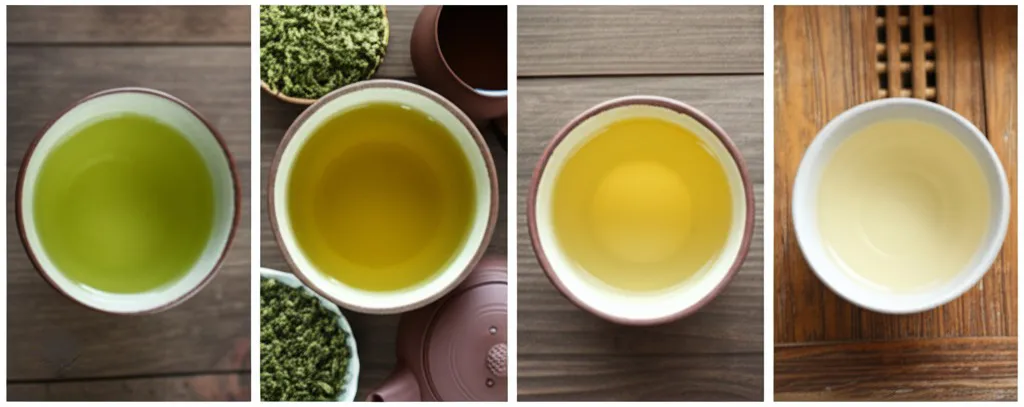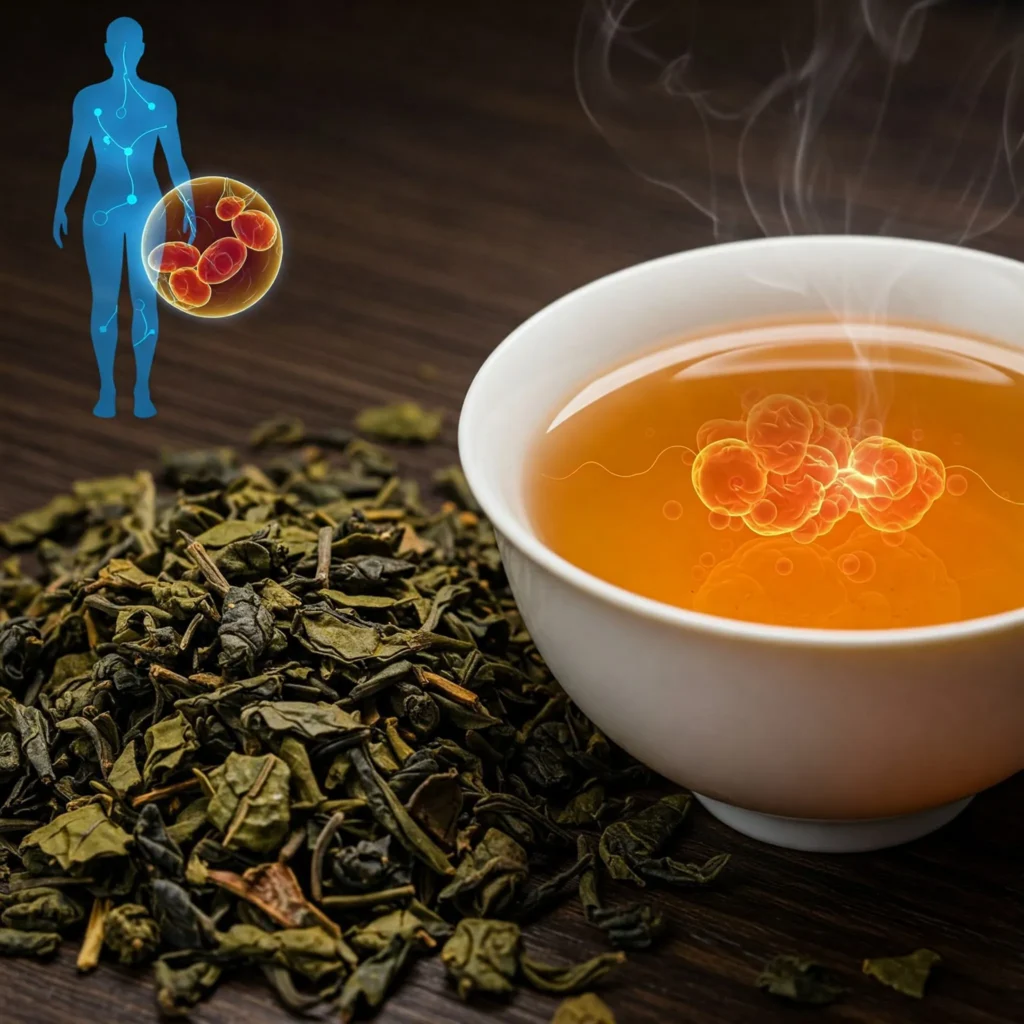What is Oolong Tea and How Does It Help with Weight Loss?
Oolong tea is a traditional Chinese tea, partially oxidized, falling between green and black tea in flavor and processing. It’s made from the Camellia sinensis plant, and its unique production involves withering and partial oxidation, giving it a range of tastes from floral to roasted.
Research suggests oolong tea helps with weight loss by increasing metabolic rate, enhancing fat oxidation, and possibly reducing fat absorption. Studies, such as one published in the Chinese Journal of Integrative Medicine, found participants drinking oolong tea for six weeks experienced significant weight and fat reduction. Another study in the Journal of Nutrition showed it increased energy expenditure by 2.9% and fat oxidation by 12%, suggesting it helps the body burn fat more efficiently (Beneficial effects of oolong tea consumption on diet-induced overweight and obese subjects).
Interestingly, a comparative study found oolong tea was more effective at reducing weight than green, black, or white tea, which might surprise those who think green tea is always the top choice for weight loss (Comparative effect of black, green, oolong, and white tea intake on weight gain and bile acid metabolism).
Selecting the Best Oolong Tea for Weight Loss

Not all oolong teas are equally effective for weight loss, and selection can impact results. Research indicates that the catechin content, which decreases with higher oxidation, is crucial for weight loss benefits. A study found that catechin content is inversely correlated with cultivation altitude, with lower-altitude teas having higher levels (Catechin content and the degree of its galloylation in oolong tea are inversely correlated with cultivation altitude). Additionally, lightly oxidized oolong teas, closer to green tea in processing, retain more catechins, which are known to boost metabolism.
For practical advice, look for:
- Lightly Oxidized Teas: These have a greener appearance and higher catechin content, potentially enhancing weight loss effects. Examples include teas labeled as “green oolong” or with oxidation levels around 20-30%.
- High-Quality Sources: Opt for loose-leaf teas from reputable regions like Fujian, China, or Taiwan, known for oolong production. Brands often specify oxidation levels, so choose those with lighter processing.
- Avoid Additives: Ensure the tea is pure, without added flavors or sugars, to maintain calorie-free benefits.
While specific brands weren’t extensively studied, general recommendations lean toward high-quality, lightly oxidized options, as they align with the compounds linked to weight loss.
Preparation and Consumption Guidelines
To maximize oolong tea’s weight loss benefits, proper preparation is key. Studies and expert recommendations suggest the following:
- Brewing Method: Use 3-5 grams of tea leaves per cup (about 150-200 mL). Heat water to approximately 90°C (190°F) to preserve nutrients, as higher temperatures can degrade catechins. Steep for 3-5 minutes, adjusting for taste, and note that oolong leaves can be re-steeped multiple times, especially with high-quality teas (Oolong Tea: Health Benefits, Nutrients per Serving, Preparation Information, and More).
- Daily Intake: Research suggests consuming 2-4 cups daily for weight loss benefits. For example, a study used 8 grams of tea leaves daily, equivalent to about 1 liter, or roughly 4-5 cups, while other sources recommend 2 cups for moderation (How to drink Oolong tea for weight loss?). Timing is important; drink after meals (25-35 minutes post-meal) to aid digestion, but avoid evening consumption due to caffeine, which may disrupt sleep.
- Consumption Tips: Drink plain, without sugar or milk, to keep it calorie-free. Some suggest drinking before exercise to enhance fat burning, though evidence is anecdotal.
Choosing and Preparing the Best Oolong Tea

For weight loss, it seems likely that lightly oxidized oolong teas are better, as they retain more catechins—compounds linked to metabolism boosting. Look for teas labeled as “green oolong” or with a lighter color, and opt for high-quality loose-leaf teas from reputable sources, such as those from Fujian, China, or Taiwan.
To prepare, use 3-5 grams of tea leaves per cup, with water at about 90°C, and steep for 3-5 minutes. Drink 2-4 cups daily, preferably after meals, and avoid adding sugar or milk to keep it calorie-free. This method helps maximize the tea’s potential benefits for weight loss (Oolong Tea Increases Metabolic Rate and Fat Oxidation in Men).
Detailed Survey Note: Exploring Oolong Tea for Weight Loss
This comprehensive survey note delves into the science, selection, and practical use of oolong tea for weight loss, expanding on the key points with detailed findings and recommendations. Oolong tea, a partially oxidized tea from the Camellia sinensis plant, has gained attention for its potential weight loss benefits, and this note aims to provide a thorough understanding for those seeking natural dietary aids.
Background and Definition
Oolong tea is a traditional Chinese tea, known for its unique position between green and black tea due to partial oxidation. This process involves withering the leaves under the sun and allowing controlled oxidation, typically ranging from 20% to 60%, before curling or twisting them. This results in a flavor profile that can be light and floral or dark and roasted, depending on the oxidation level. It’s widely consumed in China and Taiwan, often during social gatherings, and accounts for about 2% of global tea consumption (Oolong tea: Health benefits and risks).
The tea’s chemical composition includes catechins, theaflavins, thearubigins, and caffeine, which contribute to its health benefits. Studies have particularly focused on its role in weight management, making it a popular choice for those looking to enhance their diet with a calorie-free beverage.
Scientific Evidence Supporting Weight Loss
Research suggests oolong tea aids weight loss through several mechanisms, primarily by boosting metabolism and enhancing fat oxidation. A study published in the Chinese Journal of Integrative Medicine involved 102 overweight or obese subjects who consumed 8 grams of oolong tea leaves daily (about 1 liter of infusion) for six weeks. Results showed 70% of severely obese participants lost more than 1 kg, with significant reductions in body fat and waist size, particularly in women (Beneficial effects of oolong tea consumption on diet-induced overweight and obese subjects).
Another study, published in the Journal of Nutrition, examined 12 men and found that drinking oolong tea increased 24-hour energy expenditure and fat oxidation compared to water or caffeinated water, suggesting compounds beyond caffeine, like polyphenols, play a role (Oolong Tea Increases Metabolic Rate and Fat Oxidation in Men). The increase in fat oxidation was notable, with participants burning more fat for energy, which could contribute to weight loss over time.
An unexpected finding came from a comparative study on different teas, which showed oolong tea was most effective in reducing weight compared to green, black, and white tea. This study, published in PubMed, altered bile acid metabolism and found oolong tea significantly reduced relative weight, while other teas showed no effect compared to control (Comparative effect of black, green, oolong, and white tea intake on weight gain and bile acid metabolism). This suggests oolong tea may have unique properties, possibly due to its partial oxidation, that enhance its weight loss potential.
The mechanisms include:
- Increased Metabolism: Oolong tea’s caffeine and catechins can raise metabolic rate, burning more calories at rest.
- Enhanced Fat Oxidation: It promotes the breakdown of fats, using them as an energy source, as seen in the energy expenditure study.
- Possible Fat Absorption Reduction: Catechins may inhibit pancreatic lipase, reducing dietary fat absorption, as noted in some research.
Comparative Analysis with Other Teas

Oolong tea’s weight loss benefits can be compared to other teas, particularly green tea, which is often touted for similar effects. Green tea, unoxidized, has higher catechin content, especially EGCG, linked to weight loss. However, the PubMed study comparing tea types found oolong tea more effective, possibly due to its unique combination of catechins and theaflavins formed during partial oxidation (Comparative effect of black, green, oolong, and white tea intake on weight gain and bile acid metabolism). This suggests oolong may offer additional benefits, such as altered bile acid metabolism, not seen in green tea.
A blog post noted both teas share the “victory spot” for weight loss, but oolong may have more antioxidants overall, though green tea’s higher catechin concentration is notable (Oolong Tea Vs Green Tea: Origin Of Tea, Benefits & Which Is Better). For those choosing, oolong’s flavor variety and potential edge in some studies make it a compelling option.
Potential Side Effects and Precautions
Oolong tea’s caffeine content (about 38 mg per 8-ounce cup) means excessive consumption can lead to side effects. Research recommends limiting intake to less than 400 mg of caffeine daily, roughly 10 cups, to avoid insomnia, headaches, or increased heart rate (Oolong Tea: Health Benefits, Nutrients per Serving, Preparation Information, and More). Pregnant women, those with diabetes, osteoporosis, or kidney disease should consult a doctor, as caffeine and other compounds may interact with conditions.
Moderation is key, with 2-4 cups daily being a safe range for most, balancing benefits and risks.
Summary and Practical Recommendations

Oolong tea offers a promising natural aid for weight loss, supported by studies showing increased metabolism, fat oxidation, and even superiority over other teas in some cases. For best results, choose lightly oxidized, high-quality teas, brew them at 90°C for 3-5 minutes, and drink 2-4 cups daily, preferably after meals. Combine with a balanced diet and exercise for optimal effects, and be mindful of caffeine limits to avoid side effects.
This detailed exploration aims to equip readers with the knowledge to incorporate oolong tea effectively, enhancing their weight loss journey with a culturally rich and scientifically backed beverage.
Key Citations
- Beneficial effects of oolong tea consumption on diet-induced overweight and obese subjects
- Oolong Tea Increases Metabolic Rate and Fat Oxidation in Men
- Comparative effect of black, green, oolong, and white tea intake on weight gain and bile acid metabolism
- Oolong tea: Health benefits and risks
- Oolong Tea: Health Benefits, Nutrients per Serving, Preparation Information, and More
- How to drink Oolong tea for weight loss?
- Catechin content and the degree of its galloylation in oolong tea are inversely correlated with cultivation altitude
- Oolong Tea Vs Green Tea: Origin Of Tea, Benefits & Which Is Better

